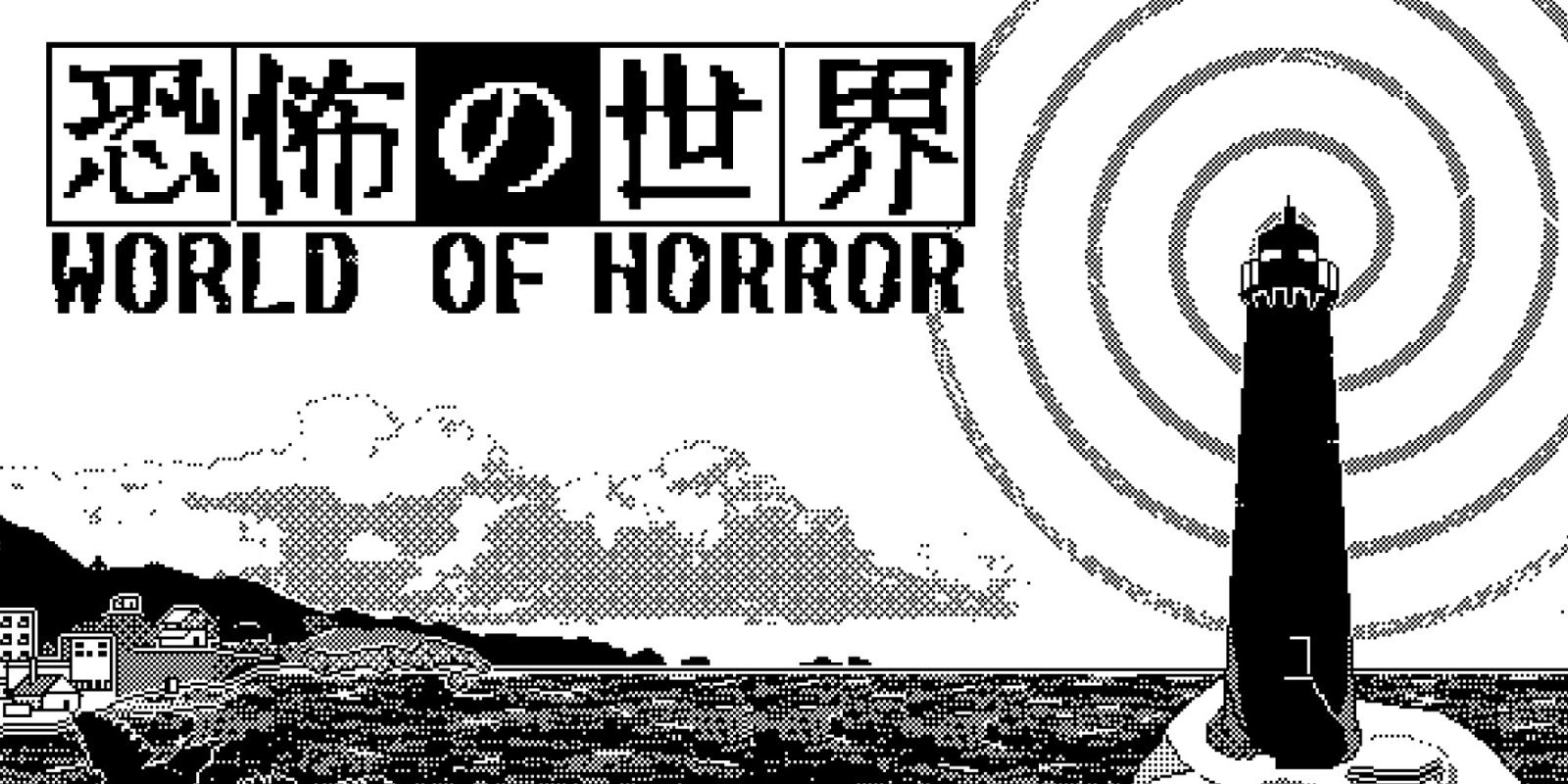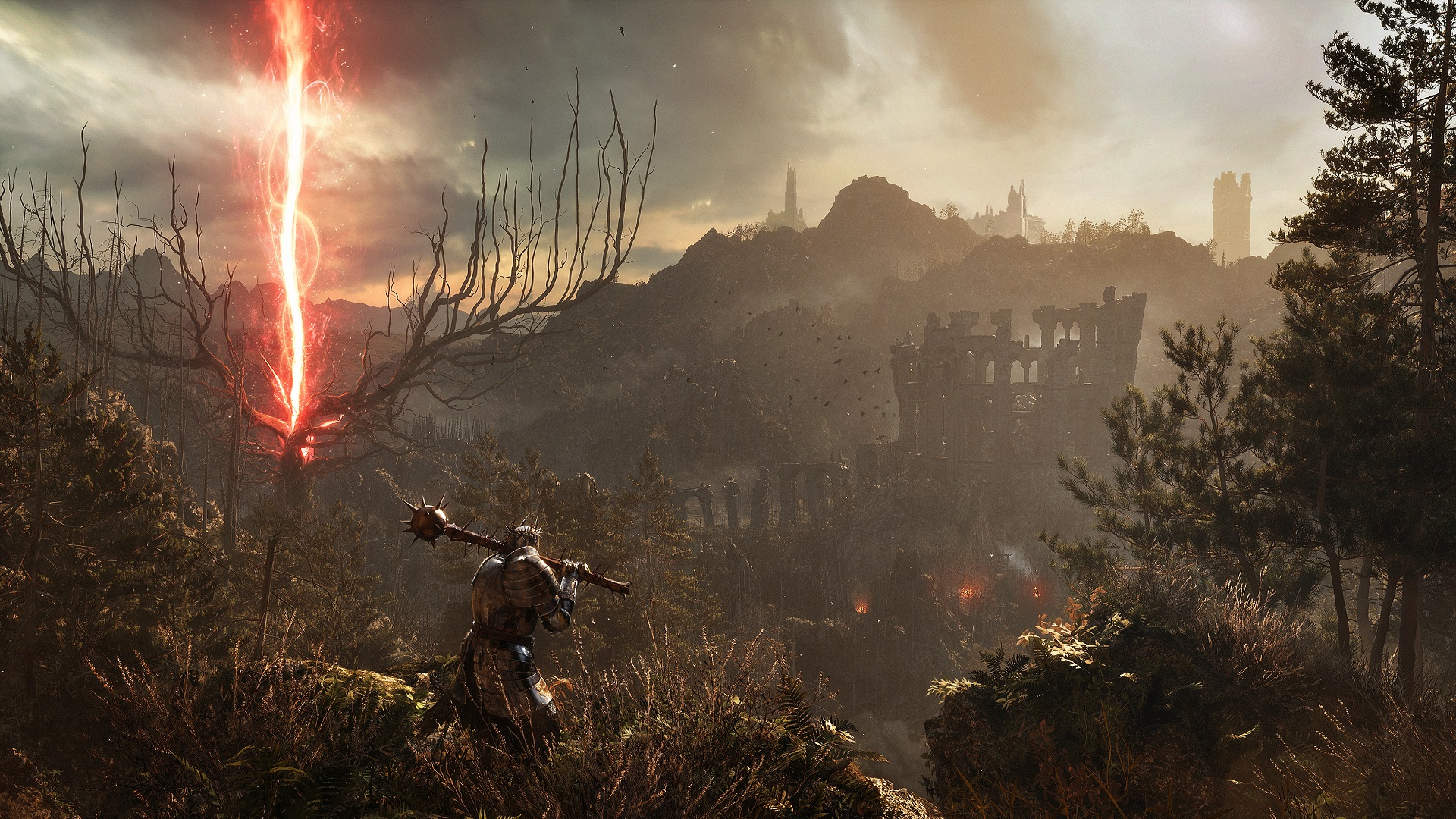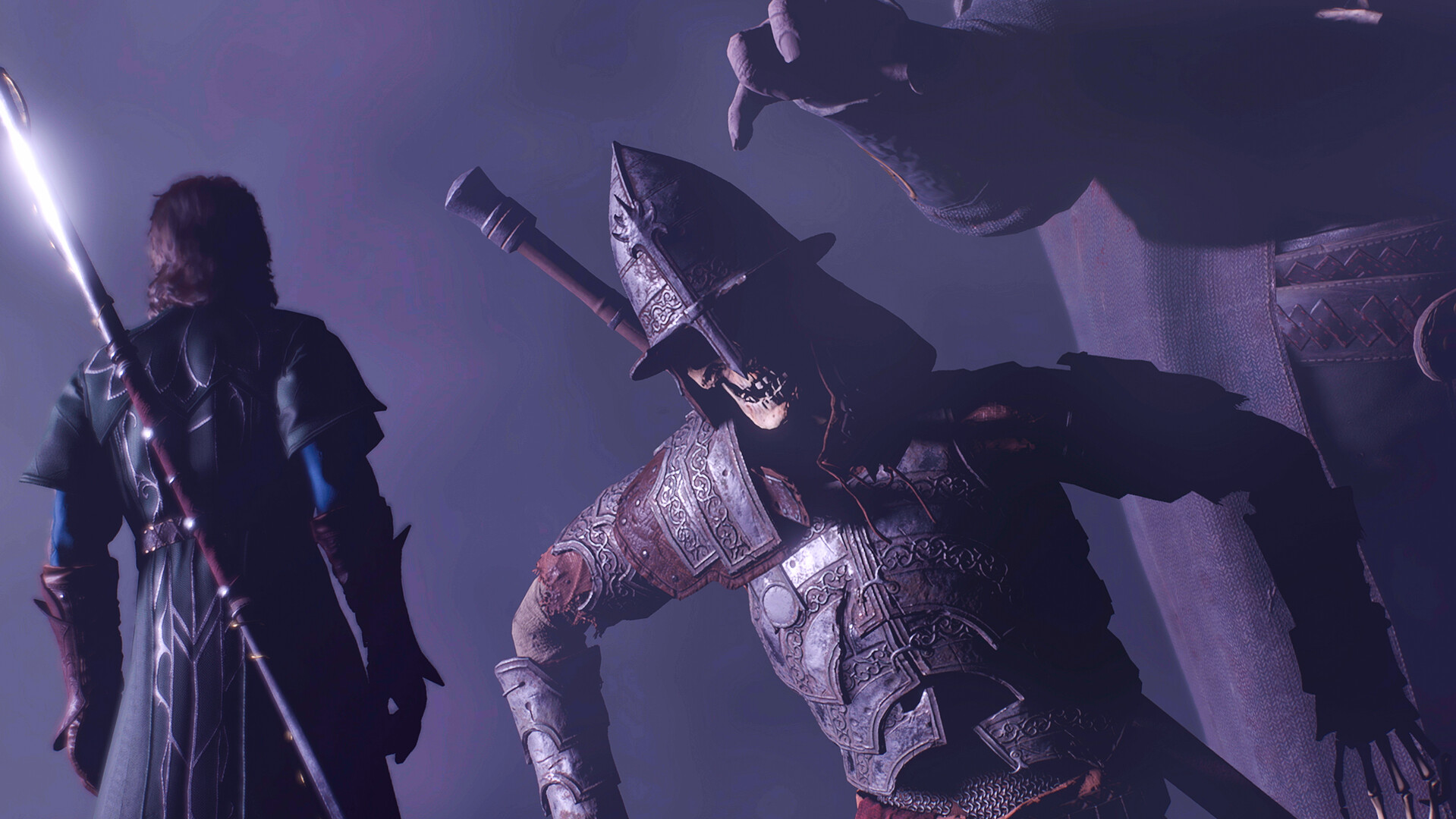
THE SINKING CITY Review – That Sinking Feeling Isn’t Bad Fish
Developed by Frogwares
Published by Bigben Interactive
Available on PS4, Xbox One, Switch, and PC (Epic Store Lir mited Exclusive)
Rated M for Mature
MSRP $59.99
I used to make a joke in college that H. P. Lovecraft was a bad writer. You have to admit, he has a certain tendency to lean on the limits of sanity to gloss over the finer details of monstrous horrors. I mean, he would love to tell you EXACTLY what the unearthly horror burrowing through the reality of space looks like, but it would totally snap your mind! Best leave things as vague shapes, lest the Mi-Go’s bore holes into your feeble human concepts of reality. There’s a fair argument to be made that this ambiguity is what makes Lovecraft’s stories endure. The reader is free to let their imagination fill in all the holes, which has led to countless personal reimaginings and an extensive extended canon. Regardless of where you stand on the overhyped-hack/visionary genius debate, the murkiness of the source material must make it an absolute nightmare to comprehensively adapt. Which is one explanation for why—despite there being hundreds of millions of fans—we have yet to see a truly great Cthulhu Mythos video game.
Yes, it might just be true that our feeble human brains cannot possibly give proper shape to the eldritch horrors of beyond the stars. So far, all games that try have fallen far short of their promise. Even the much-beloved Call of Cthulhu: Dark Corners of the Earth is only a “Classic” when looked through the most bewitching of rose-colored glasses. I’m of the opinion that the entire concept of Lovecraft mythos just doesn’t fit well into the typical dynamic of a video game. Games are about overcoming obstacles, growing your skills and power until you can overcome the penultimate challenge. Whether this is some kind of final boss or just the most difficult Sudoku equivalent is just a matter of genre. When the big baddie is supposed to be some unfeasible devourer of the cosmos, maxing out your fencing skills should be of little consequence.

Never has the clash between practical game design and source material concept been on better display than in Frogwares’ new Cthulhu title, The Sinking City. Thematically, The Sinking City is an original work that nestles snuggly in the upper echelons of the Lovecraft extended canon. You play as Charles Winfield Reed, a private investigator and WW1 veteran dually plagued by PTSD and otherworldly nightmares. These nightly visions from beyond beckon you to the town of Oakmont, Massachusetts, which is mysteriously absent from normal maps of the area. Upon arriving, you find the town and its inhabitants striving to eke out an existence in the wake of a cataclysmic event known as, “The Flood.” Leaving much of the city submerged and the streets teeming with ghoulish monstrosities, a collection of gangs, cults, and noble families of questionable genetic origin all control the various districts. It’s up to Charles to investigate the origins of the madness, cure his nightmares, and possibly save the world.

So far, so good. The Sinking City is genuinely chock full of classic ghoulish weird tales details and inspiration. The game kicks off with a spine chilling surreal nightmare sequence that sets the tone perfectly. Then you gain control of Charles, walk off the boat, and are immediately greeted by a man wearing a yellow suit and hat. This would be a pretty cool illuminating detail for fans of Lovecraft, but not three lines into conversation does the character mention how they just happen to love the color yellow. Not only that, but they happen to maybe be related to a gang called, “The Yellow Kings.” Look, Frogwares. If you’re making a Lovecraft game and over-explain things out of fear that people will miss the subtlety, you’ve wildly misjudged your market.
I wouldn’t even bring up this little detail, but it’s just the first elder sign of things to come. Not five feet from totally-not-Hastur, you’ll meet Robert Throgmorton. Mr. Throgmorton is a gorilla-person. He asks you to investigate the disappearance of his son, who he believes was killed by Innsmouthers. Refugees from the now destroyed city Innsmouth, the Innsmouthers are fish-people. They aren’t shy about it either, and will point-blank tell you that they are, “blessed by the sea,” and happy to be fish-people. After a quick investigation of the nearby house, you’ll follow the tracks of the lost Throgmorton boy into a nearby slaughterhouse. Finding him dead, a flesh monster made of arms pops out of the closet and does his darndest to do a spooky. The monster is genuinely disgusting looking, the horror of which is mitigated by Mr. Fleshbeast being quickly dispatched with two stern smacks.

Now, I can appreciate a game that cuts to the chase. Why faff about with hours of draugr when we have dragons to slay? But Lovecraft stories are defined by the slow build to terror. Furtive figures darting through dim backalleys, whispered rumors with vague yet terrifying weight, seemingly benign organizations with sinister occult motives, etc. When a shambling horror just pops out of the floor only to be shotgunned back to R’lyeh, it better be earned. Lacking proper buildup, you can still make up for it with satisfying combat.
The Sinking City does not have satisfying combat. I can’t remember the last time slaying monsters felt this tedious. You’ll acquire five different guns over the course of the game, all of which fire bullets that deal damage. You can mix things up with grenades, molotovs, and bear traps. If you run out of supplies, you can always whack things with your shovel. Most enemies have a weak spot, which can be shot for extra damage. The mechanics are dead simple. There’s no dodge, cover, focus-mode, spells, whatever else you can think of. You point your gun and hold shoot until things stop moving. There’s a decent variety of enemies, but they’re vastly underutilized.

The Sinking City suggests that the challenge comes from limited ammo, which is a lie. While actual bullets are hard to find, you can easily craft them with scrap and gunpowder found laying about. The game artificially ramps tension by only letting you carry a handful of bullets for each gun, but I never came close to running out. Mix in that every confrontation is relegated to predictable combat designated areas, and any kind of tension goes out the window.

The Sinking City’s other core gameplay loop stems around investigation. These investigations are significantly better, but not without their own slew of problems. Upon arriving at an investigation zone, it will be marked on the map with a little magnifying glass. You’ll walk around pushing the inspect button on various things, trying to gain insight into what exactly happened. In addition to his normal investigative skills, Charles also has the benefit of eldritch insight. Far from your typical “detective vision,” this special mode is only useful to glimpse into the world of the occult. It won’t highlight your objectives, but rather reveal hidden walls, ritualistic objects, or imperceptible trails. The range on it isn’t long, so you’ll have to figure out where the occult objects likely are before you try to root them out.
Oftentimes, you’ll also have to interrogate suspects. The dialogue trees and choices are pretty basic, but you’re rewarded for paying attention. The Sinking City doesn’t always tell you when a new dialogue path is opened, so you’ll have to deduce yourself if a particular revelation might lead to new information from a previously concluded conversation. There are also a number of institutions around Oakmont that you’ll need to visit in order to research further information. If a particular crime is of a uniquely ghastly nature, you might need to visit the police station to see if there’s a history of similar crimes. Each research spot has a different specialty, but you’ll need to figure out yourself where to get the correct information.

Upon collecting a key piece of information, the magnifying glass marker on your map will turn yellow. If you collect all evidence from a particular scene, it will turn green. A complete collection will reward you with experience and possible extra evidence for future investigations. Collecting key evidence will fill up your “Mind Palace,” which is basically a journal of clues you’ve collected. You’ll connect clues into conclusions: connect evidence of missing candy with Timmy having a tummy ache, and you’ll conclude that Timmy is a very naughty boy.

Gather enough conclusions, and you’ll eventually unlock one of two different decisions. This is where The Sinking City really flexes its narrative muscles. You’re always given the choice between two distasteful options, with no clean distinction between right and wrong. One particularly troubling choice was between feeding the poor and poisoning them. It might sound like the answer is obvious, but doing so gives greater power to the Esoteric Order of Dagon. So do you condemn a few to a painful death to stop the many from being turned into fish people? What’s more, it’s unclear if the cult is even objectively evil. Maybe this whole conspiracy is just the mad fantasy of a jealous husband. Ultimately, it’s up to you to parse through the evidence and decide.
Now, as awesome as the investigations and their conclusions can be, The Sinking City once again stumbles in execution. Some evidence is absurdly hard to find (I was stumped for an absurd amount of time only to find that the evidence I was missing was a single scrap of cloth attached to a broken floorboard only visible if I was going through the building backward). The game also goes old-school Morrowind, making you set your own quest markers. It’s never terribly obtuse where you need to go, so setting your own marker is more an exercise in tediously combing through street names than actually figuring things out. There’s way too much running around, and almost every investigation zone has a prerequisite monster fight. It bogs down what could have been an otherwise excellent puzzle game.

However, the colossal pisser of all of this is that your choices ultimately don’t matter. I’m not even talking in the Mass Effect 3 kind of pick your colors way either. One quest has you decide whether or not to kill a lady who might possibly save the world or could also be losing her mind. Regardless of which one you choose, you wake up the next day to find that she has been killed regardless. No matter which choices you go with, you’ll always be funneled to certain conclusions. It can be a big letdown when you go through a whole game just to find out your choices don’t matter, but to find out at the end of every mission doesn’t even fill your sails with enough wind to take out.
I’ve been pretty critical thus far, but remember I started this rant by stating that the defining quality of The Sinking City is a clash. For all that Frogwares stumbles in the gameplay and pacing, they nail in the atmosphere. Walking around the streets of Oakmont, the combination of desperation and creeping madness in the face of oblivious is palpable. And yet, people live on. Some fall to their knees and pray to the sea gods to spare them. Others resort to crime and will beat people to death on the streets. And yet most are just trying to go about their day, get to work, and get home alive. No matter where you go in The Sinking City, there are details littering the world to truly draw you into the fate of this town.

At other times, the pure essence of Lovecraft has never better been so visually realized. During one particular underwater mission, I noticed a vague figure in the distance. As the hulking shape slowly floated into view, the sheer enormity of the monstrosity left me in awe. Tentacles the size of smokestacks and a body so vast I couldn’t actually see it all. Now this is what Lovecraft is all about. Then, a few levels later, I killed a spawn of Shub-Niggurath by tossing its own exploding vomit back in its mouth. Swing and a miss, The Sinking City.
I don’t know why I haven’t lowered my expectations for Lovecraft games. Time and again, I get convinced that this next one will be the one. Finally, we’ll see the perfect Lovecraft game. Blending incomprehensible horror with fully visualized cosmic monstrosities, I want to believe that this next time will be the one. But maybe my opening paragraph was more than the ramblings of a slighted nerd. Maybe I was onto something. Maybe it’s impossible to marry practical gameplay with ethereal horror. Maybe the best we can get is the smaller scale games like Amnesia: The Dark Descent.
I’ll end by saying I appreciate immensely what Frogwares tried to do with The Sinking City. They tried to make that fabled perfect Lovecraft game. An open-world Cthulhu mythos game that features combat with otherworldly horrors and complex investigations sounds amazing. Concept alone has me leaping to Kickstarter to pledge my support. The Sinking City, at times, delivers in major ways. It’s clear that the people at Frogwares really cared about this game. But it’s also clear that they bit off more than they could chew. There are too many underdeveloped mechanics, and the lack of polish is ubiquitous. If you’re a hardcore Lovecraft fan, it’s a sale-buy at best.
The post THE SINKING CITY Review – That Sinking Feeling Isn’t Bad Fish appeared first on Dread Central.




